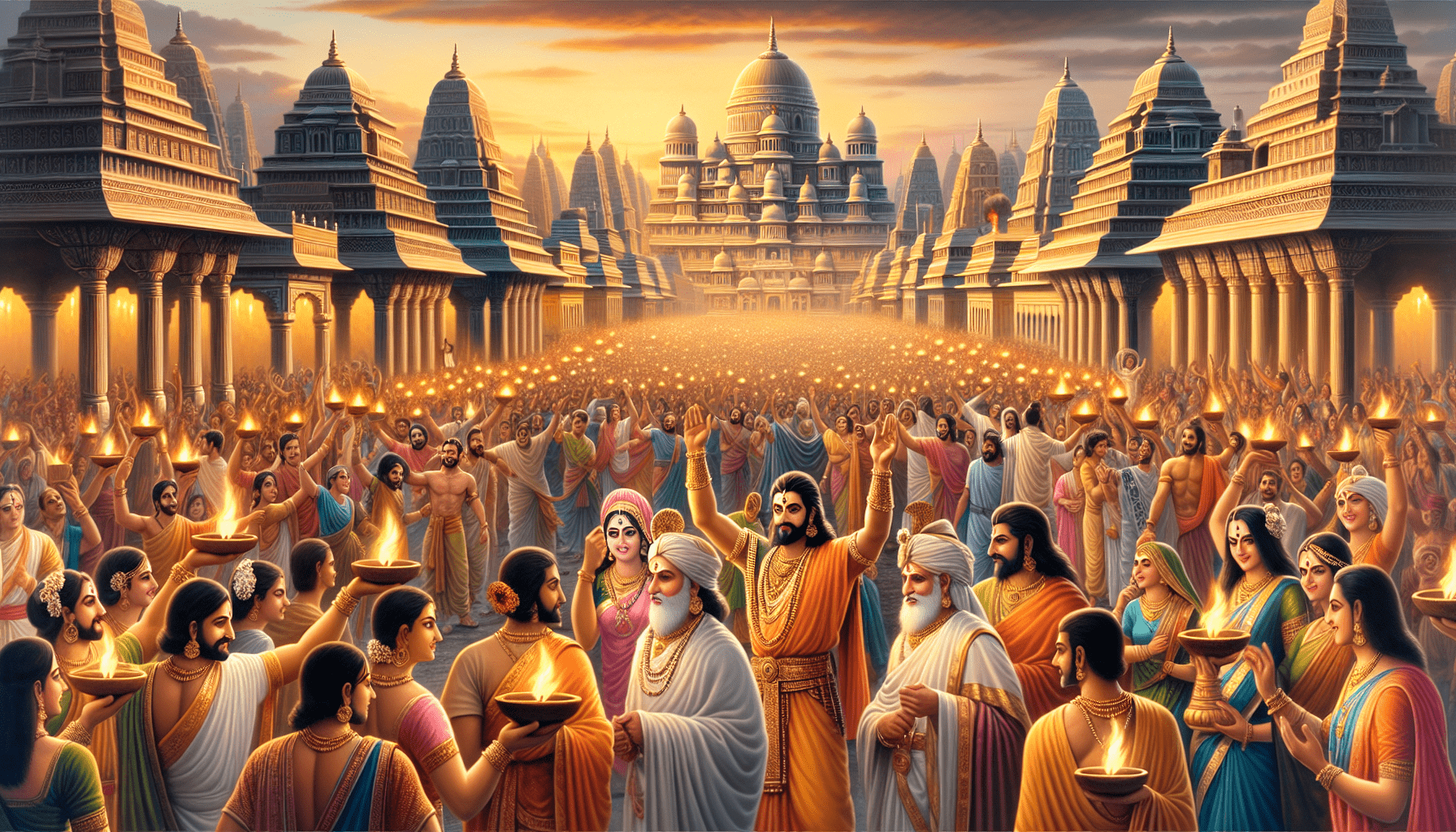In this article, we will explore the essence of the Ayodhya Kandam, a significant segment of the ancient Indian epic, Ramayana. Delve into the captivating world of Ayodhya Kandam as it unravels the enthralling story of Lord Rama’s return to his hometown, Ayodhya. Experience the triumphs, challenges, and timeless wisdom contained within this remarkable tale, exploring the depths of devotion, righteousness, and love. Discover the lessons we can learn from the Ayodhya Kandam that transcend time and continue to inspire millions across the globe. Embark on this journey and allow the timeless beauty of the Ayodhya Kandam to enrich your soul. The Ayodhya Kandam, also known as the Ayodhya section, is an integral part of the ancient Indian epic, the Ramayana. It specifically focuses on the events that took place in the city of Ayodhya, which was the capital of the legendary kingdom ruled by King Dasharatha. The Ayodhya Kandam holds immense significance in Hindu mythology and is revered by millions of devotees around the world. In this article, we will delve into the background of the Ayodhya Kandam, explore its importance and significance, and take a closer look at the key events that occur within this section of the Ramayana.

Table of Contents
Background
The Ramayana, one of the two major Sanskrit epics of ancient India, was authored by the sage Valmiki. It narrates the epic tale of Lord Rama, the seventh avatar of Lord Vishnu, and his journey to rescue his wife, Sita, from the demon king Ravana. The Ramayana consists of seven books, known as Kandams, each portraying different phases of Lord Rama’s life and adventures. The Ayodhya Kandam is the second book in the Ramayana and sets the stage for the subsequent events that unfold in the epic.
The Ramayana
Before exploring the Ayodhya Kandam, it is essential to understand the overarching story of the Ramayana. The epic begins with the divine birth of Lord Rama and his brothers – Lakshmana, Bharata, and Shatrughna – to King Dasharatha and his queens. Lord Rama is depicted as the epitome of righteousness and is adored for his noble virtues. The narrative follows Lord Rama’s journey from his princely life in Ayodhya to his exile in the forest, his encounters with various characters, and ultimately his triumphant return after defeating Ravana.
The Ayodhya Kandam
The Ayodhya Kandam primarily revolves around the city of Ayodhya and the events leading up to Lord Rama’s exile. It explores the intricate relationships, political dynamics, and moral dilemmas faced by the characters during this phase of the epic. In this section, the reader becomes deeply immersed in the world of Ayodhya, witnessing the glory and traditions of the kingdom under the wise rule of King Dasharatha.
Importance and Significance
The Ayodhya Kandam holds immense importance in Hindu mythology and serves as a moral compass for individuals seeking guidance in their lives. It portrays the significance of upholding dharma (righteousness), the consequences of succumbing to desires, and the power of familial bonds. The events that unfold in this section lay the foundation for the subsequent books of the Ramayana and shape the destiny of Lord Rama.

Key Events
The Ayodhya Kandam is filled with pivotal events that shape the course of the Ramayana. Some of the key events within this section include the birth of Lord Rama, the kingdom of Ayodhya, Lord Rama’s exile, and the final battle. Let us delve deeper into each of these events to gain a better understanding of their significance.
Birth of Lord Rama
The Ayodhya Kandam begins with the grand celebration of Lord Rama’s birth, an event that is anticipated with immense joy and enthusiasm throughout the kingdom. Lord Rama’s birth signifies the embodiment of divine virtues and becomes a symbol of hope for the people of Ayodhya.
The Kingdom of Ayodhya
Ayodhya, the kingdom ruled by King Dasharatha, serves as the backdrop for the majority of the Ayodhya Kandam. Valmiki beautifully describes the opulence and grandeur of Ayodhya, portraying it as a utopian city where righteousness prevails and the welfare of its citizens is of utmost importance.
Exile of Lord Rama
One of the most significant events in the Ayodhya Kandam is Lord Rama’s sudden exile from Ayodhya. Due to unforeseen circumstances and the manipulation of Kaikeyi, King Dasharatha is forced to grant Lord Rama’s exile and crown his younger brother, Bharata. This event marks a turning point in the narrative and sets in motion the subsequent events leading to Lord Rama’s encounter with Ravana.
The Final Battle
The Ayodhya Kandam sets the stage for the epic battle between Lord Rama and the demon king Ravana. While the actual battle occurs in the later books of the Ramayana, the Ayodhya Kandam is crucial in providing the context and motivations for this epic confrontation. It showcases Lord Rama’s unwavering determination to protect righteousness and recover his beloved wife, Sita.
In conclusion, the Ayodhya Kandam is a profound section of the ancient Indian epic, the Ramayana. It explores the events that unfold in the kingdom of Ayodhya, shaping the destiny of Lord Rama and setting the tone for the subsequent books of the epic. By delving into the Ayodhya Kandam, one can gain valuable insights into the importance of righteousness, the consequences of desire, and the power of family bonds. The Ayodhya Kandam continues to captivate the hearts and minds of millions, serving as a guiding light for all those seeking inspiration and moral guidance.